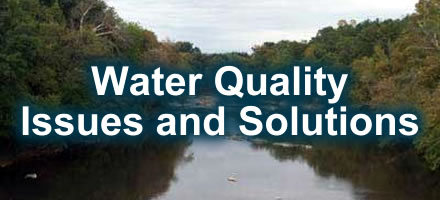
Summary

The basis for this project draws from Dr. DuCoste’s experiences with water treatment and Dr. Powell’s experiences in pesticide monitoring of ground and surface water and pesticide regulation. The intent is to provide an avenue for students to experience how scientists study and develop solutions to environmental problems. Both the hydrosphere and the scientific method are significant portions of the 8th grade curriculum so this experience is built around these two units. Just as scientists do, students will experience a five step process: 1. Basic lab research on aquatic organisms, 2. Monitoring the environment for water quality, 3. Developing solutions to environmental issues through use of technology, 4. Developing solutions to issues through the political process and regulations, and 5. Educating the public about the scientific issue so they can become part of the solution rather than part of the problem.
First students will become familiar with common fresh water microorganisms and macroinvertebrates (insects, crayfish etc.) They will learn a little about their life cycles and their role in a freshwater ecosystem. This will lead to some basic laboratory research. Using the scientific method, students will design and conduct a series of lab experiments to learn about the effects of some possible pollutants (sediment, oil, pH, fertilizer etc.) on aquatic organisms (duckweed, brine shrimp etc.). They will use the knowledge gained from their lab experiments to write a fictitious endangered species plan to protect their organism from extinction in the year 2055 when the world has become a severely polluted place. Students will also learn how a scientist monitors the health of a stream by using chemical and macroinvertebrate analysis. Students will learn to measure basic water chemistry parameters such as nitrates, nitrites, oxygen, phosphates, pH etc. They will analyze water samples from one or more streams in the Neuse River Basin by chemical and macroinvertebrate analysis. Students will compare the health of a stream upstream and downstream of a golf course to see if the golf course has an effect on stream health.
Students will learn how scientists use technology to develop solutions to environmental problems. Dr. DuCoste’s experience enters here. He will teach students about the drinking water treatment process and have them design a portion of a drinking water treatment plant using his simulation software. Next we will focus on how laws are used to protect streams and rivers. We will follow some of the existing laws and some that are being considered currently in North Carolina. We will study the issue of Butner’s request to increase dumping of treated waste into Falls Lake, which is Raleigh’s drinking water supply. Students will write letters to state politicians on an environmental issue so they learn how to influence environmental regulations. Finally, students will learn that educating the public is an important part of the solution to environmental problems. An educated public can contribute to the solution rather than the problem.
You can view Gail Powell's PowerPoint Presentation at the link below

